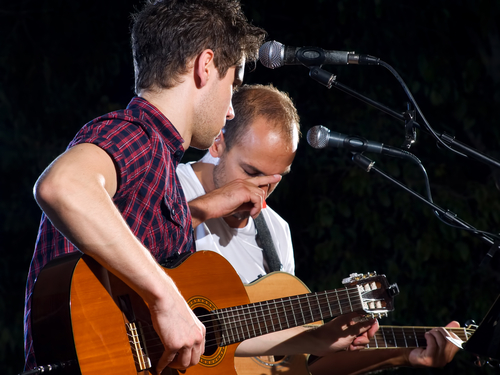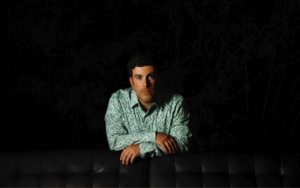 Performance adaptability helps you play more music, earn more money, and build your audience
Performance adaptability helps you play more music, earn more money, and build your audience
I have a lot of friends in Austin this week for SXSW, which means my Facebook and Twitter feeds are full of live concert photos. And one thing I noticed: in a lot of these shots, the bands are playing in some kind of altered or stripped-down configuration.
A synthpop band is on stage without their drummer. A guitar-driven rock band has gone acoustic. The sprawling indie folk ensemble has decided to put down their accordions, cellos, trumpets, and banjos in order to back up the lead singer as a kind of drunken choir.
This approach makes sense for SXSW where it’s tough enough to navigate through the crowds WITHOUT having to haul a bunch of heavy gear. When you sonically strip away some layers, you become more nimble (logistically speaking). You can play your set, break down, and quickly get to the next place you need to be.
Plus, if you, like some bands I know, are playing nine times throughout the event, changing up your instrumentation is one way to make each showcase feel special (for you and audiences).
But there’s a few good reasons why you might want to adopt a similar approach when you’re back home and playing local shows again too.
1. Provide variety for your audience
As I mentioned above, when you change up your instrumentation for a set, you’ll have some novelty appeal (which may be just the thing some listeners need in order to get invested in your music). This is especially true for hometown crowds who may have already seen you play a few times this year.
2. Book more gigs (and make more money)
The more configurations your band can comfortably play in (sans drums, low-volume acoustic, solo or duo, etc.), the more types of gigs you can book — which helps you perform more without over-saturating your market, because different types of fans will come out to these different types of venues.
And, depending on the area of course, many of the best paying local gigs can be in restaurants and wineries, NOT clubs. Oh, and don’t forget corporate events and company parties. They may want the full-on sonic assault, but they might also just want a couple musicians playing quietly by the punch bowl.
3. Be prepared for in-studio and in-store performance scenarios
Unless you’re playing at KEXP or some similar kind of station, your in-studio performances will probably be a bit stripped-down. There’s just not a lot of space in a radio station studio room to set up the double kick, Marshall stacks, and string section.
Some independent record stores where you perform might not have a big area for the whole band either, so economy can work in your favor here too.
4. Get ready for emergencies
You’re on tour 1500 miles from home when your bassist starts throwing up in the van. Are you going to cancel the show? No, get up there and play your set with some light percussion and no bass.
You drive 200 miles to a gig where the opening band is supposed to backline their drum set — but they got in a giant fight the day before, broke up, and didn’t tell the club (or you). Are you going to drive 200 miles back home? No, go play a stripped-down set without the drums! (And remember to confirm the backline details next time on the DAY OF the show).
Etc. Etc. Etc. Etc.
You get the point. You’re going to encounter performance situations from time to time where you have volume or space constraints. You can either gripe about it like a diva, or you can prepare in advance to rock almost any situation, room, or audience. I recommend the second option. Play around, pick out which of your songs work in different settings, and then put a few different sets together in varying configurations.
At the very least, you’ll be ready to play someone’s backyard BBQ at next year’s SXSW.
—
Can your band pull off a few different arrangements of your songs? How has this helped your career? Let me know in the comments below.
[hana-code-insert name=’touring-dont-miss’ /]
[hana-code-insert name=’newsletter-free-updates’ /]
[Musician photo from Shutterstock.]
